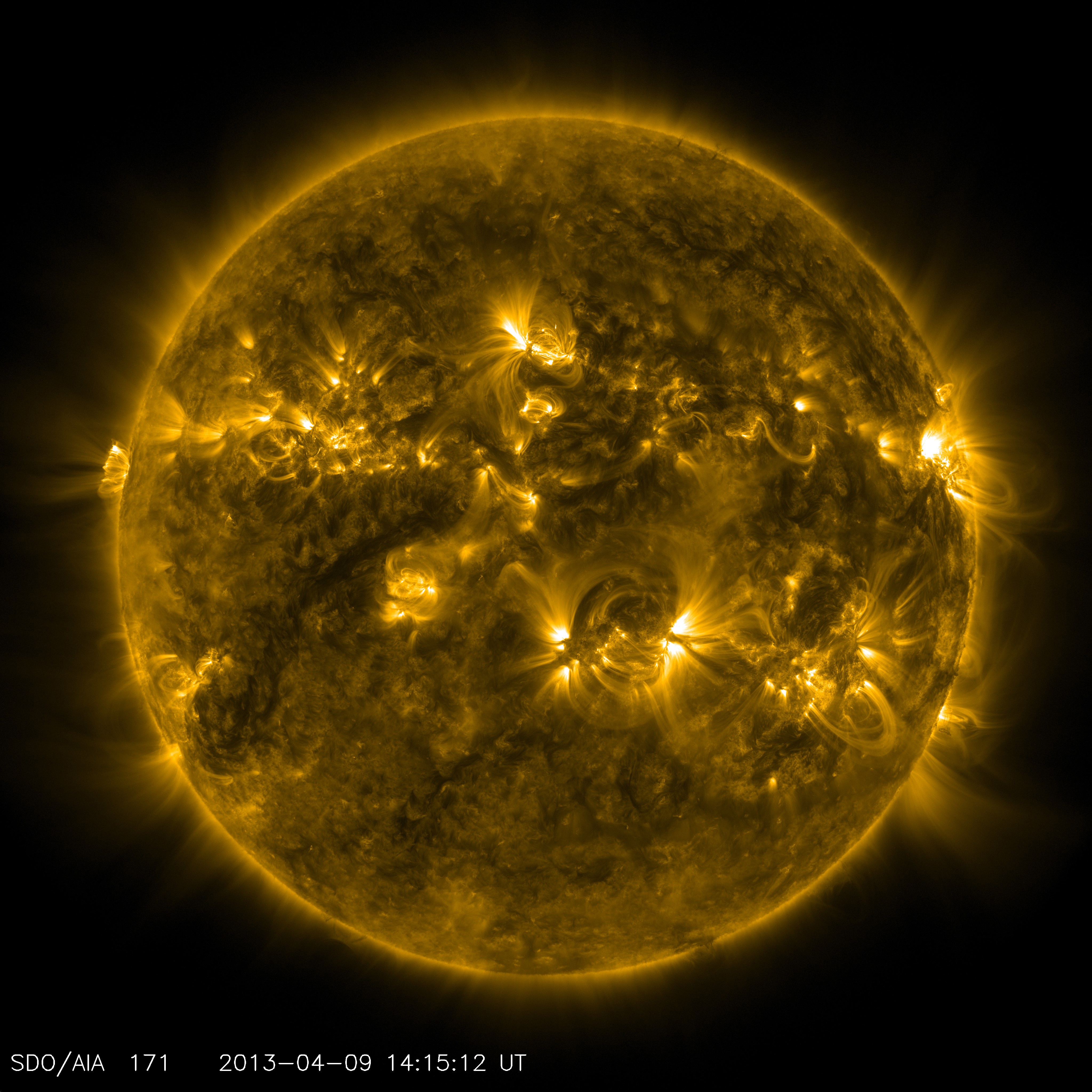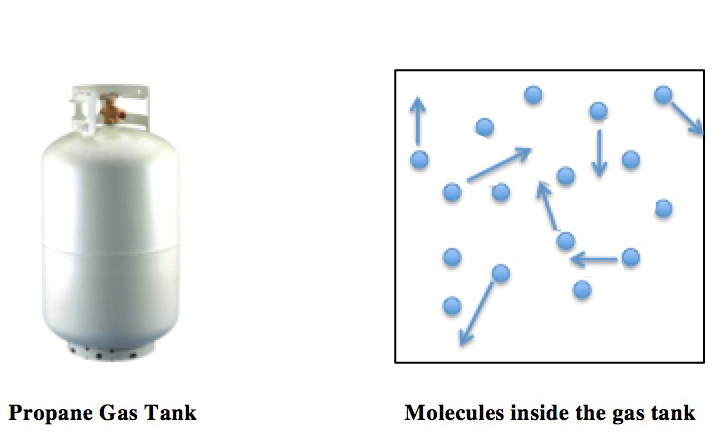|
Fast Magnetosonic Wave
In physics, magnetosonic waves, also known as magnetoacoustic waves, are low-frequency Compression (physics), compressive waves driven by mutual interaction between an electrically conducting fluid and a magnetic field. They are associated with Compression (physics), compression and rarefaction of both the fluid and the magnetic field, as well as with an Magnetic tension, effective tension that acts to straighten bent magnetic field lines. The properties of magnetosonic waves are highly dependent on the angle between the wavevector and the equilibrium magnetic field and on the relative importance of fluid and magnetic processes in the medium. They only propagate with frequencies much smaller than the ion cyclotron or ion plasma frequencies of the medium, and they are Dispersion relation, nondispersive at small amplitudes. There are two types of magnetosonic waves, fast magnetosonic waves and slow magnetosonic waves, which—together with Alfvén waves—are the normal modes of idea ... [...More Info...] [...Related Items...] OR: [Wikipedia] [Google] [Baidu] |
Physics
Physics is the scientific study of matter, its Elementary particle, fundamental constituents, its motion and behavior through space and time, and the related entities of energy and force. "Physical science is that department of knowledge which relates to the order of nature, or, in other words, to the regular succession of events." It is one of the most fundamental scientific disciplines. "Physics is one of the most fundamental of the sciences. Scientists of all disciplines use the ideas of physics, including chemists who study the structure of molecules, paleontologists who try to reconstruct how dinosaurs walked, and climatologists who study how human activities affect the atmosphere and oceans. Physics is also the foundation of all engineering and technology. No engineer could design a flat-screen TV, an interplanetary spacecraft, or even a better mousetrap without first understanding the basic laws of physics. (...) You will come to see physics as a towering achievement of ... [...More Info...] [...Related Items...] OR: [Wikipedia] [Google] [Baidu] |
Magnetohydrodynamic
In physics and engineering, magnetohydrodynamics (MHD; also called magneto-fluid dynamics or hydromagnetics) is a model of electrically conducting fluids that treats all interpenetrating particle species together as a single continuous medium. It is primarily concerned with the low-frequency, large-scale, magnetic behavior in plasmas and liquid metals and has applications in multiple fields including space physics, geophysics, astrophysics, and engineering. The word ''magnetohydrodynamics'' is derived from ' meaning magnetic field, ' meaning water, and ' meaning movement. The field of MHD was initiated by Hannes Alfvén, for which he received the Nobel Prize in Physics in 1970. History The MHD description of electrically conducting fluids was first developed by Hannes Alfvén in a 1942 paper published in ''Nature'' titled "Existence of Electromagnetic–Hydrodynamic Waves" which outlined his discovery of what are now referred to as ''Alfvén waves''. A ... [...More Info...] [...Related Items...] OR: [Wikipedia] [Google] [Baidu] |
Coronal Loop
In solar physics, a coronal loop is a well-defined arch-like structure in the Sun's Stellar atmosphere, atmosphere made up of relatively dense Plasma (physics), plasma confined and isolated from the surrounding medium by magnetic flux tubes. Coronal loops begin and end at two footpoints on the photosphere and project into the Solar transition region, transition region and lower Solar corona, corona. They typically form and dissipate over periods of seconds to days and may span anywhere from in length. Coronal loops are often associated with the strong magnetic fields located within active regions and sunspots. The number of coronal loops varies with the 11 year solar cycle. Origin and physical features Due to a natural process called the solar dynamo driven by heat produced in the Sun's core, convective motion of the electrically conductive plasma (physics), plasma which makes up the Sun creates electric currents, which in turn create powerful magnetic fields in the Sun's inte ... [...More Info...] [...Related Items...] OR: [Wikipedia] [Google] [Baidu] |
Ideal Gas Law
The ideal gas law, also called the general gas equation, is the equation of state of a hypothetical ideal gas. It is a good approximation of the behavior of many gases under many conditions, although it has several limitations. It was first stated by Benoît Paul Émile Clapeyron in 1834 as a combination of the empirical Boyle's law, Charles's law, Avogadro's law, and Gay-Lussac's law. The ideal gas law is often written in an empirical form: pV = nRT where p, V and T are the pressure, volume and Thermodynamic temperature, temperature respectively; n is the amount of substance; and R is the ideal gas constant. It can also be derived from the microscopic kinetic theory of gases, kinetic theory, as was achieved (independently) by August Krönig in 1856 and Rudolf Clausius in 1857. Equation The state function, state of an amount of gas is determined by its pressure, volume, and temperature. The modern form of the equation relates these simply in two main forms. The temperature us ... [...More Info...] [...Related Items...] OR: [Wikipedia] [Google] [Baidu] |
Incompressible Flow
In fluid mechanics, or more generally continuum mechanics, incompressible flow is a flow in which the material density does not vary over time. Equivalently, the divergence of an incompressible flow velocity is zero. Under certain conditions, the flow of compressible fluids can be modelled as incompressible flow to a good approximation. Derivation The fundamental requirement for incompressible flow is that the density, \rho , is constant within a small element volume, ''dV'', which moves at the flow velocity u. Mathematically, this constraint implies that the material derivative (discussed below) of the density must vanish to ensure incompressible flow. Before introducing this constraint, we must apply the conservation of mass to generate the necessary relations. The mass is calculated by a volume integral of the density, \rho : : = . The conservation of mass requires that the time derivative of the mass inside a control volume be equal to the mass flux, J, acro ... [...More Info...] [...Related Items...] OR: [Wikipedia] [Google] [Baidu] |
Spherical Coordinate System
In mathematics, a spherical coordinate system specifies a given point in three-dimensional space by using a distance and two angles as its three coordinates. These are * the radial distance along the line connecting the point to a fixed point called the origin; * the polar angle between this radial line and a given ''polar axis''; and * the azimuthal angle , which is the angle of rotation of the radial line around the polar axis. (See graphic regarding the "physics convention".) Once the radius is fixed, the three coordinates (''r'', ''θ'', ''φ''), known as a 3-tuple, provide a coordinate system on a sphere, typically called the spherical polar coordinates. The plane passing through the origin and perpendicular to the polar axis (where the polar angle is a right angle) is called the ''reference plane'' (sometimes '' fundamental plane''). Terminology The radial distance from the fixed point of origin is also called the ''radius'', or ''radial line'', or ''radial coor ... [...More Info...] [...Related Items...] OR: [Wikipedia] [Google] [Baidu] |
Unit Vector
In mathematics, a unit vector in a normed vector space is a Vector (mathematics and physics), vector (often a vector (geometry), spatial vector) of Norm (mathematics), length 1. A unit vector is often denoted by a lowercase letter with a circumflex, or "hat", as in \hat (pronounced "v-hat"). The term ''normalized vector'' is sometimes used as a synonym for ''unit vector''. The normalized vector û of a non-zero vector u is the unit vector in the direction of u, i.e., :\mathbf = \frac=(\frac, \frac, ... , \frac) where ‖u‖ is the Norm (mathematics), norm (or length) of u and \, \mathbf\, = (u_1, u_2, ..., u_n). The proof is the following: \, \mathbf\, =\sqrt=\sqrt=\sqrt=1 A unit vector is often used to represent direction (geometry), directions, such as normal directions. Unit vectors are often chosen to form the basis (linear algebra), basis of a vector space, and every vector in the space may be written as a linear combination form of unit vectors. Orthogonal coordinates ... [...More Info...] [...Related Items...] OR: [Wikipedia] [Google] [Baidu] |
Group Velocity
The group velocity of a wave is the velocity with which the overall envelope shape of the wave's amplitudes—known as the ''modulation'' or ''envelope (waves), envelope'' of the wave—propagates through space. For example, if a stone is thrown into the middle of a very still pond, a circular pattern of waves with a quiescent center appears in the water, also known as a capillary wave. The expanding ring of waves is the wave group or wave packet, within which one can discern individual waves that travel faster than the group as a whole. The amplitudes of the individual waves grow as they emerge from the trailing edge of the group and diminish as they approach the leading edge of the group. History The idea of a group velocity distinct from a wave's phase velocity was first proposed by William Rowan Hamilton, W.R. Hamilton in 1839, and the first full treatment was by John Strutt, 3rd Baron Rayleigh, Rayleigh in his "Theory of Sound" in 1877. Definition and interpretation ... [...More Info...] [...Related Items...] OR: [Wikipedia] [Google] [Baidu] |
Magnetic Pressure
In physics, magnetic pressure is an energy density associated with a magnetic field. In SI units, the energy density P_B of a magnetic field with strength B can be expressed as :P_B = \frac where \mu_0 is the vacuum permeability. Any magnetic field has an associated magnetic pressure contained by the boundary conditions on the field. It is identical to any other physical pressure except that it is carried by the magnetic field rather than (in the case of a gas) by the kinetic energy of gas molecules. A gradient in field strength causes a force due to the magnetic pressure gradient called the magnetic pressure force. Mathematical statement In SI units, the magnetic pressure P_B in a magnetic field of strength B is :P_B = \frac where \mu_0 is the vacuum permeability and P_B has units of energy density. Magnetic pressure force In ideal magnetohydrodynamics (MHD) the magnetic pressure force in an electrically conducting fluid with a bulk plasma velocity field \mathbf, current densi ... [...More Info...] [...Related Items...] OR: [Wikipedia] [Google] [Baidu] |
Phase Velocities
The phase velocity of a wave is the rate at which the wave propagates in any medium. This is the velocity at which the phase of any one frequency component of the wave travels. For such a component, any given phase of the wave (for example, the crest) will appear to travel at the phase velocity. The phase velocity is given in terms of the wavelength (lambda) and time period as :v_\mathrm = \frac. Equivalently, in terms of the wave's angular frequency , which specifies angular change per unit of time, and wavenumber (or angular wave number) , which represent the angular change per unit of space, :v_\mathrm = \frac. To gain some basic intuition for this equation, we consider a propagating (cosine) wave . We want to see how fast a particular phase of the wave travels. For example, we can choose , the phase of the first crest. This implies , and so . Formally, we let the phase and see immediately that and . So, it immediately follows that : \frac = -\frac \frac = \frac ... [...More Info...] [...Related Items...] OR: [Wikipedia] [Google] [Baidu] |
Alfvén Speed
Alfvén may refer to: People * Hannes Alfvén (1908–1995), Swedish plasma physicist and Nobel Prize in Physics laureate * Hugo Alfvén (1872–1960), Swedish composer, conductor, violinist, and painter * Marie Triepcke Krøyer Alfvén (1867–1940), commonly known as Marie Krøyer, Danish painter, wife of Hugo Other * Alfvén wave In plasma physics, an Alfvén wave, named after Hannes Alfvén, is a type of plasma wave in which ions oscillate in response to a restoring force provided by an Magnetic tension force, effective tension on the magnetic field lines. Definition ..., a type of magnetohydrodynamic wave, named after Hannes Alfvén * 1778 Alfvén, an asteroid discovered in 1960, named after Hannes Alfvén {{disambig, surname ... [...More Info...] [...Related Items...] OR: [Wikipedia] [Google] [Baidu] |
Sound Speed
The speed of sound is the distance travelled per unit of time by a sound wave as it propagates through an elastic medium. More simply, the speed of sound is how fast vibrations travel. At , the speed of sound in air is about , or in or one mile in . It depends strongly on temperature as well as the medium through which a sound wave is propagating. At , the speed of sound in dry air (sea level 14.7 psi) is about . The speed of sound in an ideal gas depends only on its temperature and composition. The speed has a weak dependence on frequency and pressure in dry air, deviating slightly from ideal behavior. In colloquial speech, ''speed of sound'' refers to the speed of sound waves in air. However, the speed of sound varies from substance to substance: typically, sound travels most slowly in gases, faster in liquids, and fastest in solids. For example, while sound travels at in air, it travels at in water (almost 4.3 times as fast) and at in iron (almost 15 times as fast). ... [...More Info...] [...Related Items...] OR: [Wikipedia] [Google] [Baidu] |




